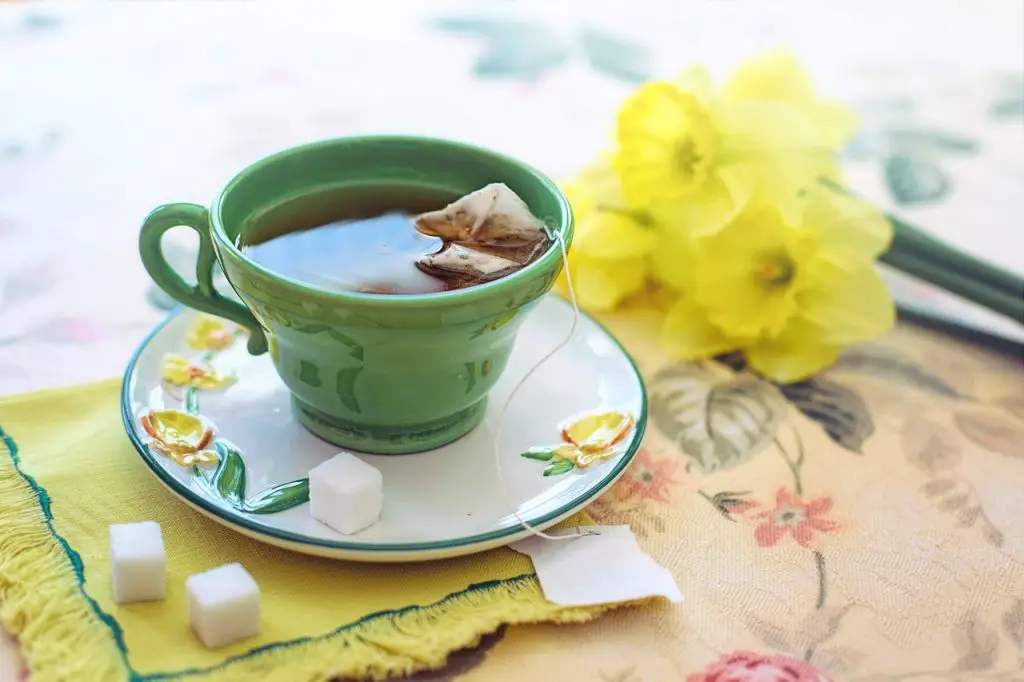Green tea, a centuries-old beverage originating from China, has gained immense popularity worldwide due to its numerous health benefits and refreshing taste. Whether you’re a novice tea enthusiast or a seasoned connoisseur, learning how to make green tea properly can enhance your tea-drinking experience and help you unlock its full potential. In this comprehensive guide, we will explore the various aspects of green tea, including its history, types, health benefits, and, most importantly, how to make the perfect cup of green tea.
A Brief History of Green Tea
Green tea has a rich and storied history dating back thousands of years. It was first discovered in China during the Shang dynasty (16th-11th century BC) when leaves from the Camellia sinensis plant accidentally fell into a pot of boiling water. Over time, the process of making green tea was refined and passed down through generations.
During the Tang dynasty (618-907 AD), tea drinking became an integral part of Chinese culture. It was during this period that the “Tencha” method of steaming tea leaves was developed, giving birth to the green tea we know today. Green tea also found its way to Japan, where it became an essential element of Japanese culture and the basis for traditional tea ceremonies.
Types of Green Tea
Before we dive into the art of making green tea, it’s essential to understand the different types of green tea available:
Sencha: This is the most common and widely consumed type of green tea in Japan. It is made from the top leaves and buds of the tea plant and is characterized by its fresh, grassy flavor.
Matcha: Matcha is a powdered green tea made from shade-grown tea leaves. It’s famously used in Japanese tea ceremonies and has a rich, umami flavor.
Dragon Well (Longjing): A renowned Chinese green tea, Dragon Well is pan-fired to produce a flat, smooth leaf. It has a sweet, nutty taste and is known for its high-quality.
Gunpowder: This Chinese green tea is tightly rolled into small pellets, resembling gunpowder. It has a strong, smoky flavor and is often used in Moroccan mint tea.
Gyokuro: Gyokuro is a premium Japanese green tea made from shade-grown leaves. It has a sweet, delicate flavor and is considered one of the finest green teas.
Bancha: Bancha is a Japanese green tea made from the older leaves and stems of the tea plant. It has a mild, earthy flavor and is often served in Japanese households.
Now that we have an overview of the types of green tea available, let’s explore how to make a perfect cup of green tea.
Making the Perfect Cup of Green Tea
Making green tea may seem straightforward, but it requires attention to detail to achieve the best flavor and aroma. Here’s a step-by-step guide on how to make the perfect cup of green tea:
Ingredients and Equipment:
Green tea leaves or tea bags
Fresh, filtered water
Tea kettle or pot
Teapot or teacup
Thermometer (optional)
Timer
Steps:
Select Quality Green Tea:
Start by choosing a high-quality green tea that suits your taste preferences. Whether you prefer sencha, matcha, or another variety, the freshness and quality of the tea leaves significantly impact the final result.
Measure the Tea:
The ideal tea-to-water ratio varies depending on the type of green tea. As a general guideline, use 1 teaspoon of loose tea leaves or one tea bag per 8 ounces (240 ml) of water. Adjust the amount to taste.
Boil Water:
Heat fresh, filtered water to the appropriate temperature for your chosen green tea variety. Different green teas require different water temperatures, typically ranging from 160°F (71°C) to 185°F (85°C). You can use a thermometer to ensure accuracy.
Preheat Teapot or Teacup:
Pour a small amount of hot water into the teapot or teacup to preheat it. Swirl the water around and discard it.
Add Tea Leaves:
Place the measured tea leaves or tea bag into the preheated teapot or teacup.
Pour Hot Water:
Carefully pour the hot water over the tea leaves or tea bag. Ensure that the water covers the tea completely.
Steep the Tea:
The steeping time varies depending on the type of green tea:
For sencha and other loose-leaf green teas, steep for 1-3 minutes.
For matcha, whisk the tea powder into hot water and enjoy immediately.
Refer to the specific instructions for your chosen tea variety for precise steeping times.
Avoid Oversteeping:
Oversteeping green tea can lead to bitterness. Use a timer to monitor the steeping time, and remove the tea leaves or tea bag promptly when the time is up.
Enjoy Without Milk or Sugar:
Green tea is typically enjoyed without the addition of milk or sugar. However, you can experiment with honey or lemon if you prefer a different flavor profile.
Sip Slowly:
Take your time to savor the flavors and aromas of your freshly brewed green tea. Green tea offers a wide range of tastes, from grassy and vegetal to sweet and nutty.
Rebrew if Desired:
Depending on the type of green tea, you can often rebrew the same tea leaves multiple times, each time revealing new flavors. Adjust the steeping time for subsequent brews as needed.
Health Benefits of Green Tea
Aside from its delightful taste, green tea offers a plethora of health benefits, making it a popular choice among those looking to boost their well-being naturally. Here are some of the remarkable health benefits associated with green tea consumption:
Rich in Antioxidants:
Green tea is loaded with antioxidants, particularly catechins, which help combat oxidative stress and reduce the risk of chronic diseases.
Supports Weight Management:
The catechins in green tea have been shown to boost metabolism and aid in fat oxidation, making it a valuable addition to weight loss and management efforts.
Enhances Brain Function:
Green tea contains L-theanine, an amino acid that can improve cognitive function, boost mood, and increase alertness without the jitters associated with caffeine.
Promotes Heart Health:
Regular consumption of green tea has been linked to a reduced risk of heart disease by improving cholesterol levels and lowering blood pressure.
Supports Digestive Health:
Green tea can aid in digestion, soothe digestive discomfort, and promote a healthy gut due to its anti-inflammatory and antimicrobial properties.
May Reduce the Risk of Cancer:
Some studies suggest that the antioxidants in green tea may help protect against certain types of cancer by inhibiting the growth of cancer cells.
Dental Health:
Green tea contains fluoride and antibacterial properties that can help prevent tooth decay and reduce bad breath.
Skin Benefits:
The polyphenols in green tea may help improve skin health by reducing the signs of aging, such as wrinkles and fine lines.
Tips and Tricks for Making the Best Green Tea
To further enhance your green tea-making skills, consider these additional tips and tricks:
Use High-Quality Water: The quality of your water can significantly impact the flavor of your tea. Use fresh, filtered water to ensure a clean, pure taste.
Experiment with Water Temperature: While the recommended temperatures for green tea are a good starting point, don’t hesitate to experiment to find the ideal temperature that suits your taste.
Store Green Tea Properly: To maintain freshness, store green tea in an airtight container away from light, heat, and moisture.
Try Different Steeping Times: Adjust the steeping time to achieve the flavor profile you desire. A shorter steeping time will result in a milder taste, while a longer steeping time may yield a bolder flavor.
Explore Tea Accessories: Invest in quality teapots, teacups, and tea infusers to elevate your tea-drinking experience.
Pair with Food: Green tea pairs well with a variety of foods, from sushi to pastries. Experiment with food pairings to discover delightful combinations.
Stay Mindful of Caffeine: While green tea contains less caffeine than black tea or coffee, it’s not entirely caffeine-free. If you’re sensitive to caffeine, consider opting for decaffeinated green tea.
Green tea, with its rich history, diverse varieties, and numerous health benefits, is a beverage that deserves a place in your daily routine. Whether you prefer the delicate notes of sencha or the intense flavors of matcha, mastering the art of making green tea will allow you to fully appreciate its unique qualities.
By selecting high-quality tea leaves, paying attention to water temperature and steeping times, and savoring each sip, you can create a perfect cup of green tea that delights your senses and enhances your well-being. So, why not brew a cup of green tea today and embark on a journey of taste, culture, and wellness? Your perfect cup of green tea awaits!
Exploring Green Tea Variations
Beyond the traditional method of brewing green tea, there are several variations and recipes that allow you to enjoy this delightful beverage in different ways. Let’s take a look at some popular green tea variations:
Iced Green Tea:
During hot summer months, a refreshing glass of iced green tea can be a lifesaver. To make it, follow these steps:
Brew a strong batch of green tea.
Allow it to cool to room temperature.
Pour it over ice cubes.
Add a slice of lemon, mint leaves, or a touch of honey for extra flavor.
Green Tea Latte:
If you’re a fan of creamy, frothy beverages, try making a green tea latte:
Brew a cup of strong green tea.
Heat milk (dairy or plant-based) in a separate pot.
Froth the milk until it’s creamy.
Pour the milk into the green tea and sweeten to taste with honey or sugar.
Jasmine Green Tea:
Jasmine green tea combines the floral aroma of jasmine flowers with the earthy notes of green tea. To make it:
Place a few jasmine flowers in a container with green tea leaves.
Seal the container and let it sit for several hours or overnight.
The tea leaves will absorb the jasmine scent, creating a fragrant infusion.
Green Tea Smoothie:
For a nutritious and energy-boosting drink, blend green tea with fruits and vegetables:
Brew a cup of green tea and let it cool.
Combine the tea with ingredients like spinach, banana, mango, and a touch of honey in a blender.
Blend until smooth and enjoy your green tea smoothie.
Green Tea Cocktails:
Green tea can also be incorporated into cocktails for a unique twist. Try a Green Tea Mojito, Green Tea Martini, or Green Tea Sangria for a refreshing adult beverage.
Common Green Tea Mistakes to Avoid
While green tea is relatively easy to make, there are some common mistakes to be aware of:
Using Boiling Water: Water that is too hot can scorch the delicate green tea leaves and result in a bitter taste. Be sure to use the recommended water temperature for your specific green tea variety.
Oversteeping: Allowing green tea to steep for too long can lead to bitterness. Use a timer to ensure you remove the tea leaves or tea bag at the right moment.
Low-Quality Tea: The quality of your tea leaves matters. Low-quality green tea can produce a lackluster cup, so invest in good-quality tea for the best results.
Stale Tea Leaves: Like any other food product, green tea can go stale over time. Store your tea properly in an airtight container to preserve freshness.
Using Hard Water: If your tap water is hard (contains high mineral content), it can affect the taste of your tea. Consider using filtered or bottled water to brew your green tea.
Skipping the Preheating Step: Preheating your teapot or teacup helps maintain the temperature of your tea when you pour in the hot water. Skipping this step can result in a less flavorful brew.
Making green tea is an art that can be both meditative and rewarding. As you explore the world of green tea, remember that there is no one-size-fits-all method. The key to mastering the perfect cup lies in understanding your preferences, experimenting with different types of green tea, and fine-tuning your brewing techniques.
Whether you seek the soothing tranquility of a hot cup of sencha or the invigorating refreshment of an iced green tea, green tea offers a diverse range of flavors and experiences. Embrace the centuries-old tradition of green tea and discover the joy it can bring to your daily life.
So, gather your favorite green tea leaves, brew a cup, and embark on a journey of taste, culture, and well-being. As you savor each sip of your perfectly brewed green tea, you’ll be indulging in a timeless beverage that has delighted generations and continues to offer a world of health benefits and sensory pleasures.




